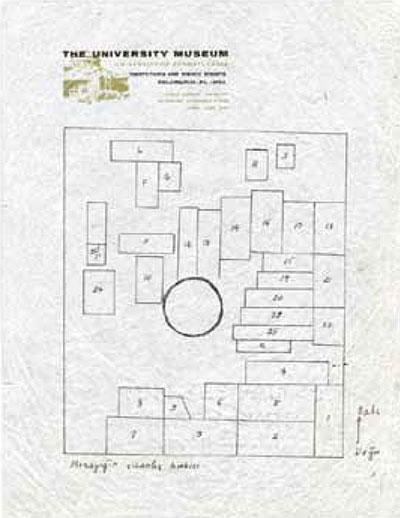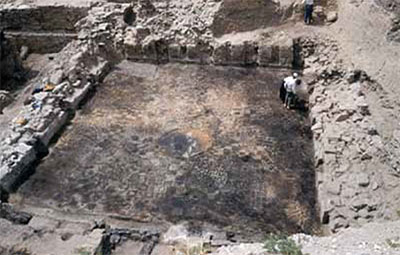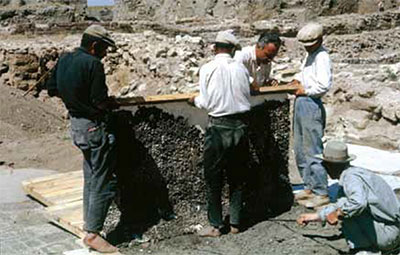Organizing collections of records to make them available for research is not straightforward. The ease or difficulty in sorting through a large number of documents is directly related to whether the creator of the records maintained a discernible filing system and how carefully he or she weeded out the records without research value.

Owing in large part to failing health in his last years, Keith DeVries, a curator in the Penn Museum’s Mediterranean Section (1972–2004), did not keep a neat office. After his death in 2006, his records arrived at the Museum Archives in complete disarray.
Over a couple of years, with the help of Archives volunteer James DeWalt, the Keith DeVries papers have now been processed. It was a painstaking task. All his letters had to be brought together by correspondent, drafts of his publications had to be sorted and dated, and his slides identified. A handful of documents remained, however, that defied interpretation or classification. These were brought to Gareth Darbyshire, Gordion Project Archivist, for final identification. One was a diagram drawn on 1960s Museum letterhead, a piece of crumpled onion-skin paper that included words written in Turkish. Darbyshire was able to identify it immediately. It apparently dates to 1963, and most likely had not been seen since. It is a plan of the mosaic from Gordion Megaron 2.
Gordion, capital city of the Iron Age kingdom of Phrygia (located in what is now central Turkey), has been extensively excavated by the Museum since 1950. One of the most notable of many remarkable Gordion discoveries was made in 1956, when a monumental two-room hall, dubbed “Megaron 2,” was uncovered. Dating to the Early Phrygian period (ca. 850–800 BCE), it had been destroyed along with many other buildings in an extensive and probably accidental fire ca. 800 BCE. The most prominent feature of the megaron was a fantastic pebble mosaic floor, generally believed to be the earliest example of its kind in the world. Arrangements of thousands of red, blue-gray, and white stones formed a kaleidoscope of geometric motifs. Quoting Tiffin Thompson, who worked at Gordion in 2011, the freehand pattern was perhaps intended to convey the impression of “intricately woven strips or rugs superimposed over each other.”

In 1963, seven years after Megaron 2’s excavation, the best preserved parts of the floor were cut out and lifted in a series of 33 panels, in readiness for their installation in a new museum that was being planned for the site. The operation was masterminded by Muzaffer Ertoran (1922–2007), an expert from the Turkish Department of Antiquities and a celebrated sculptor. However, for reasons now unknown, the plan to install the panels in the new museum (built in 1965) was put off for two decades, and did not take place until around 1983. By that time, the panels were in a distressed condition and, unfortunately, they were not all installed at the museum in their correct relative positions.
The recovery of a document that indicates how the mosaic fits together is timely. In 2010, Penn Design’s Architectural Conservation Laboratory began recording and analyzing the panels, as part of a research project to improve the preservation and display of the mosaic. The team had indeed noticed that the placement of the panels did not correspond to the watercolor drawing by Joseph Last, but had no documentation to confirm it. This unassuming drawing should allow for a more accurate restoration.


Gareth Darbyshire, Ph.D., is the Gordion Project Archivist and a Research Associate at the Penn Museum. Alessandro Pezzati is Senior Archivist at the Penn Museum.
